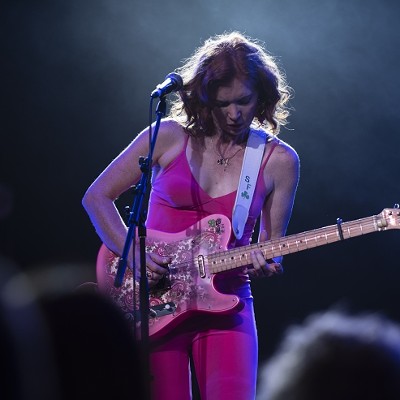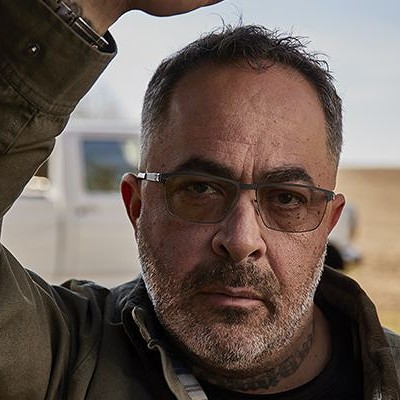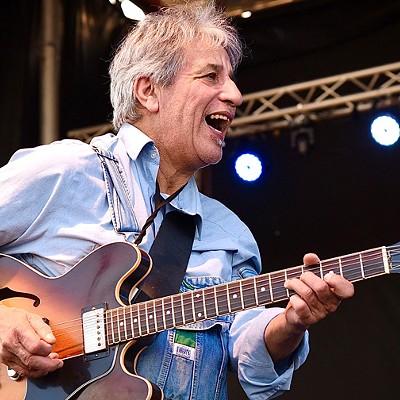Fifty years ago this Sunday, the Beatles ushered in a new era in pop music and youth culture when they made their first live appearance on The Ed Sullivan Show. While the four lads from Liverpool were still mostly unknown to Americans in 1964, they were already the most hyped rock and roll band in U.S. history by the time they arrived from England at New York's Kennedy Airport. More than 40 percent of U.S. televisions were tuned in to Ed Sullivan that night to see what the fuss was about.
Most of those who tuned in -- teenage girls, in particular -- never forgot what they saw. It was the nation's first glimpse of the most important band in rock and roll history. The Beatles had three singles and two albums on the U.S. charts at the time, with "I Want to Hold Your Hand" having sold a million copies in less than a month after it was leaked early to radio. But no one in the U.S. knew much of anything about them other than what they could learn from an album sleeve.
The Ed Sullivan Show would provide a formal introduction. The group had already rocketed to superstardom in England after an appearance on their homeland's Ed Sullivan equivalent, Val Parnell's Sunday Night at the London Palladium. They'd even performed for the Queen. With "I Want to Hold Your Hand" topping the charts and all over radio, now it was America's turn.
9. Davy Jones and the Riddler were there. The Beatles weren't the only act scheduled for The Ed Sullivan Show that night. Just the only one anybody remembers. It would be charitable to say that the other guests, which included a team of acrobats, a Vaudevillian comedy duo and the Broadway cast of Oliver! were upstaged. Not a single teenage girl ever lost her mind over Oliver!, even though that cast included a pre-Monkees Davy Jones.
The only other Sullivan guest on the evening who's still semi-famous 50 years later is Las Vegas impressionist Frank Gorshin, who played the cackling Riddler in ten episodes of the Adam West Batman show. Gorshin was a frequent guest on talk shows back in the day, where he delighted audiences with his spoofs of Marlon Brando and Kirk Douglas. Practically overnight, the Beatles were bigger stars than either of those two.
8. Ed Sullivan had already experienced Beatlemania firsthand. The lads' performance on his show was not Ed Sullivan's first taste of the teenage pandemonium known as Beatlemania. The TV legend and his wife happened to be at London Airport in October of 1963 the day the Beatles were due to return from a tour of Sweden. Already a phenomenon in England, their mere appearance at the airport was enough to draw a crowd of thousands of teenagers.
When Sullivan asked someone what all the commotion was about, he was informed that it was for the Beatles. "Who the hell are the Beatles?" he's said to have asked next. In less than a year, he'd be ensuring that practically everyone in the United States knew the answer to that.
7. The Fab Four drew a quarter of a billion viewers. As we've discussed, more than 40 percent of TVs in the U.S. were tuned in to the Beatles' first performance on Ed Sullivan. How many people was that, exactly? Well, enough to make the Beatles the all-time ratings champs for a regularly-scheduled program. More than 73 million watched that first appearance. The combined audience for all of the band's four appearances on the show? Oh, only a quarter of a billion people, making the Beatles just about the most famous people on the planet.
6. George Harrison wasn't feeling so hot. The man very soon to become known as "The Quiet Beatle" was almost the Absent Beatle at the first Sullivan performance. George Harrison had been forced to skip rehearsals for the show, having come down with tonsillitis. Unwilling to miss the group's American close-up, the guitarist willed himself well enough to perform on the day of the show -- with a fever of 102. No wonder he kept his mouth shut at the press conference.
5. Capitol Records distributed the band's itinerary to radio. Ever wonder how thousands of teenagers seemed to know exactly where the Beatles would be every second of their earliest visit to the U.S.? They knew because Capitol Records made sure they did. To create the biggest media spectacle possible, the record company provided details of the group's itinerary to New York's radio stations, which encouraged their young listeners to greet The Beatles at the airport instead of going to dumb, old school that day.
When the Fab Four arrived on Feb. 7, 1964, more than 3,000 teens stood four deep on the airport's upper arcade to greet them. It was an even larger, more insane crowd than Sullivan himself had witnessed at London Airport weeks earlier.
4. Beatlemania had been kicked off by Uncle Walter. While The Ed Sullivan Show was certainly the biggest and best introduction to U.S. households the Beatles had received yet, the man who had introduced the band to its first mass audience in America had been Walter Cronkite.
The legendary newscaster had run a four-minute story on the strange, faddish young rock and roll group making waves in England in December 1963. The footage used included a performance of "I Want to Hold Your Hand," and when teens started requesting the song from local radio stations, DJs began importing the single from England and playing it a month ahead of its U.S. release date. By February, it would be the No. 1 song in the nation, and 73 million would tune in to hear it on Sullivan. The nation's favorite newscaster, Cronkite had the stroke at CBS to get his daughters into the studio for the performance.
List continues on the next page.





